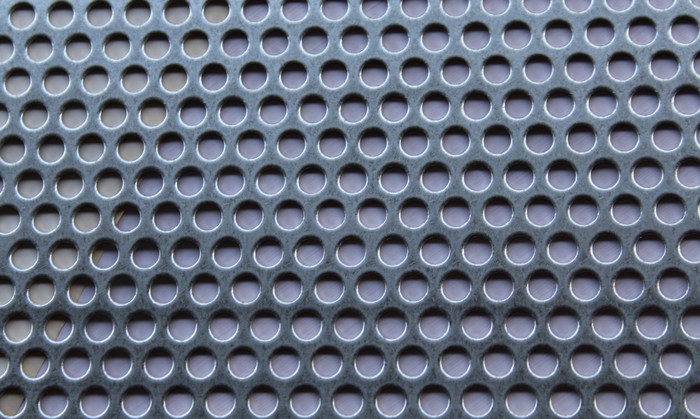Thickness Requirements for Perforated Iron Plate Processing
Source:www.cn-psp.cnAuthor:河北森驰公司 Last updated:2025-06-11 18:05:44 Browse:
Perforated iron plate is a widely used metal product in construction decoration, mechanical manufacturing, ventilation and sound insulation, screening and filtration, and many other industries. It is created by punching various hole patterns on metal sheets using a punching machine, resulting in a mesh-like structure that is both aesthetically pleasing and functionally effective.
The thickness of the iron plate is a critical factor in the perforation process. It not only affects the feasibility of production and the lifespan of the punching die but also impacts the performance and quality of the final product. This article provides a comprehensive explanation of the thickness requirements for perforated iron plate processing, helping customers choose the right product for their specific needs.
1. Processing Thickness Range of Perforated Iron Plate
Currently, the standard processing thickness range for perforated iron plates is 0.2mm to 20mm. This range is suitable for a wide variety of materials, including cold-rolled steel sheets, hot-rolled steel sheets, stainless steel, aluminum sheets, and galvanized sheets. Within this thickness range, most punching equipment can efficiently create various types of perforated holes while ensuring strength, precision, and durability.
2. Various Hole Shapes Available
Perforated iron plates can be customized with a wide selection of hole types depending on application needs. Common hole types include:
Octagonal holes,Pentagonal holes,Hexagonal holes,Square holes,Slotted (long) holes,Cross-shaped holes,Embossed (raised) holes,Sawtooth holes,Lattice holes,Waist-shaped (oval) holes
These options provide excellent flexibility for different functional and aesthetic requirements, making perforated iron plates highly versatile across industries.

Perforated iron plate
3. Relationship Between Plate Thickness and Hole Size
A key rule in perforated iron plate processing is that the plate thickness must not exceed the diameter of the designed hole size. This is essential to prevent damage to the punching tool and avoid deformation of the sheet.
For example, attempting to punch a 2mm hole in a 3mm thick iron plate would exert excessive pressure on the tool, possibly leading to punch breakage, excessive burrs, or even process failure.
Therefore, when designing hole patterns, it is generally recommended that the hole diameter be at least 1.2 to 1.5 times the plate thickness. This ensures processing safety, tooling longevity, and product integrity.
4. Key Parameters to Communicate When Ordering
To ensure your perforated iron plate meets all functional and technical requirements, it is important to clearly communicate the following parameters with the manufacturer:
Material of the sheet (e.g., cold-rolled steel, stainless steel, aluminum)
Plate thickness (e.g., 2mm, 5mm, etc.)
Hole pattern and shape
Hole size (diameter or length/width for shaped holes)
Spacing between holes and margins
End use or application (e.g., for decoration, filtration, protection)
By providing these details in full, the manufacturer can select the right punching die and process to deliver a high-quality perforated iron plate tailored to your project.
5. Conclusion
Perforated iron plate processing is a highly customizable metal fabrication service. Thickness selection and hole design directly impact product quality and usability. The best practice is to understand your specific application needs thoroughly and to consult with an experienced manufacturer to determine optimal plate thickness, hole size, and other key specifications.
If you have further questions about choosing the right perforated iron plate thickness, feel free to contact our technical team. We are ready to offer professional advice and tailored solutions to help you efficiently achieve your project goals.
